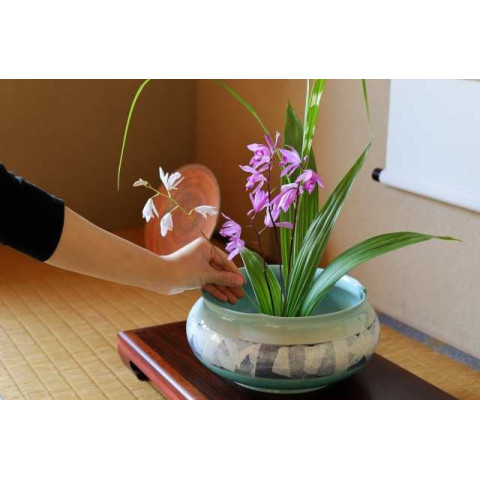
"Ikebana" is the Japanese art of flower arrangement. It's a traditional practice that dates back centuries and focuses on creating beautiful and harmonious compositions using flowers, branches, leaves, and other natural elements. Unlike Western flower arranging, which often emphasizes symmetry and fullness, Ikebana strongly emphasises minimalism and simplicity.
The word "Ikebana" itself means "living flowers" or "to make flowers alive," emphasizing the idea that the arrangement should bring out the life and essence of the plant materials. Ikebana practitioners carefully consider the balance of lines, shapes, colours, and the space between elements to create a sense of harmony and grace.
There are various schools of Ikebana, each with its own unique principles and styles. Some well-known Ikebana schools include the Ikenobo School, the Sogetsu School, and the Ohara School, among others. Each school has its own curriculum and philosophy, which allows for a diverse range of artistic expressions within the world of Ikebana.
Western flower arrangement and Ikebana (Japanese flower arrangement) are two distinct styles of floral art with several key differences in terms of philosophy, aesthetics, and techniques:
Western floral design often emphasizes symmetry, fullness, and the natural beauty of flowers. The focus is on creating a lush and abundant appearance, with a wide variety of flowers and foliage. Western floral design typically follows principles such as balance, proportion, and colour harmony. It often features tightly packed and densely arranged flowers.
Ikebana is rooted in Japanese philosophy and aesthetics. It values minimalism, simplicity, and the use of negative space. Ikebana aims to capture the essence of the materials and create a harmonious balance between nature and the human touch. Ikebana adheres to specific design principles, known as "ikebana principles," which include minimalism, asymmetry, and the use of prescribed forms and angles. There is a strong emphasis on the arrangement's overall silhouette and the relationships between the elements.
Ikebana is a decorative art form and a deeply spiritual and meditative practice for many who engage in it. It is often used in traditional Japanese ceremonies, such as tea ceremonies and weddings, to enhance the overall aesthetic experience and create a connection with nature.
